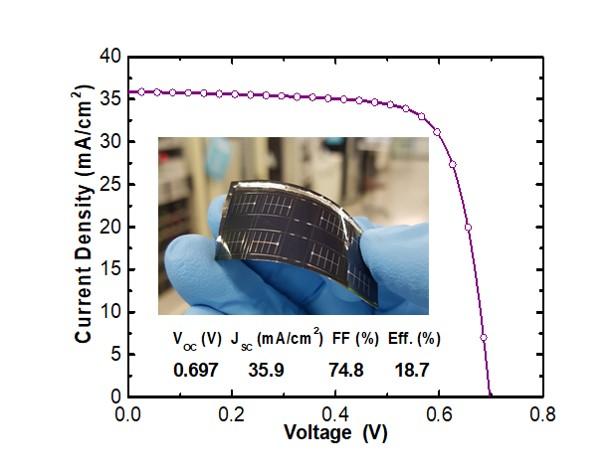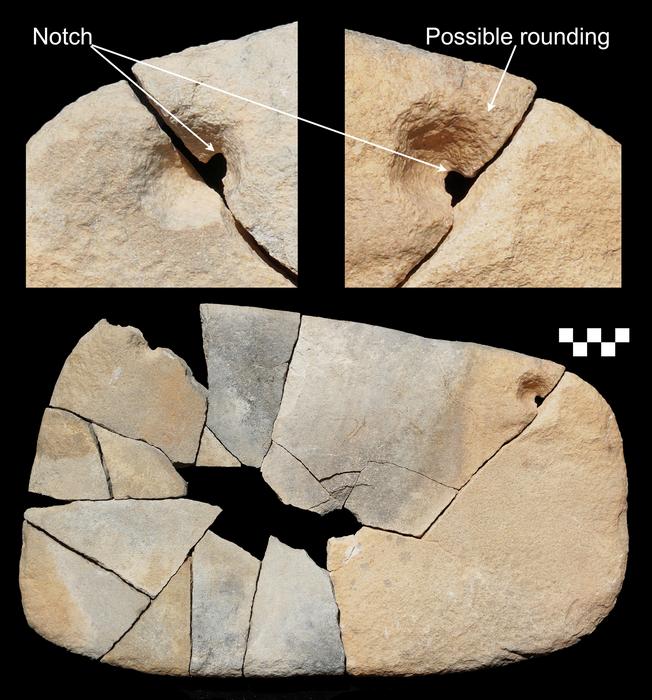Identification of efficiency enhancement mechanism of polymer substrate flexible CIGS thin film solar cell; research results published in ‘Nano Energy’, an international journal in the field of energy

Credit: Korea Institute of Energy Research (KIER)
Korea Institute of Energy Research (President Kim, Jong-nam) found an efficiency improvement mechanism of polymer-substrate flexible CIGS thin-film solar cells* and published the results in ‘Nano Energy‘ (IF: 15.548).
*CIGS thin film solar cell: A kind of next-generation thin-film solar cell that has Cu(In,Ga)Se2-based compound materials. The CIGS-based solar cells can be fabricated on glass or (flexible) plastic substrate. This kind of solar cell shows high conversion efficiencies even with very a thin absorber layer with 1-2 μm thickness.
CIGS thin-film solar cells offer high conversion efficiencies with less materials and simpler processes than crystalline silicon solar cells yet chemically very stable and durable. However, due to the recent rapid price drops of crystalline silicon photovoltaic cells/modules, the technology development direction of CIGS-based thin-film solar cells is changing to the urban environment-friendly energy source market represented by Building Integrated Photovoltaics (BIPV).
Thus, to meet the requirements of the upcoming needs, the conventional substrates of CIGS thin-film solar cells, hard and heavy glass substrates, should be replaced to flexible lightweight substrates without efficiency loss. However, compared with the conventional CIGS thin-film solar cell manufacturing technology based glass substrate, the demonstration of high-efficiency CIGS solar cells on the lightweight/flexible polymer substrate is technically difficult and therefore only a few research groups are able to demonstrate high conversion efficiencies from the flexible polymer substrate cells.
The Korea Institute of Energy Research’s photovoltaic Reseach Department has succeeded in developing a lightweight and flexible, high-efficiency CIGS thin-film solar cells on polymer substrate and elucidating the mechanisms of extrinsic alkali incorporation in CIGS solar cells using advanced nanoscale analyses.
In general, the conventional CIGS deposition process undergoes a high temperature of approximately 550 °C; which is not suitable for the polymer substrate having a low melting point. Therefore, the researchers introduced a new low-temperature film formation technology to lower the deposition temperature while maintaining efficiency**
**flexible thin film CIGS solar cell efficiency of KIER: 20.4% (Existing highest efficiency: Swiss EMPA 20.8%)
The researchers also attempted to enhance device efficiencies by an external alkali incorporation technology that apply alkali-fluoride (sodium-fluoride and potassium-fluoride) in the CIGS absorber layers. In particular, state-of-the-art analytical methods were employed to investigate the mechanism of external alkali incorporation into the CIGS absorber layers and the origin of the efficiency enhancement by the alkali incorporation.
Principal Researcher Kihwan Kim of Korea Institute of Energy Research who is the first author of the research paper said, “This achievement is evaluated as the establishment of a standard process for high efficiency of ultra-light flexible CIGS thin film solar cells. It is worthwhile to note that we have secured the original technology for Korea.” Co-author and Principal Researcher Jaeho Yoon said “This developed technology will contribute to urban development by producing new high value-added solar cell products and creating next-generation applications fields.”
Based on the developed technology, the research team will continue further researches such as large-area high-speed CIGS thin-film solar cell manufacturing technology, advancement of materials, components, and equipment technologies related to ultra-thin flexible thin-film solar cell, and ultra-thin flexible high-performance thin-film solar module manufacturing technology that can be installed on building walls and roofing materials.
###
Meanwhile, this work was conducted under the collaboration with KAIST, Ehwa Womans University and Chonnam National University, and was financially supported by the Framework of the Research and Development Program of the Korea Institute of Energy Research (KIER) and the Technology Development Program to Solve Climate Changes of the National Research Foundation of Korea funded by the Ministry of Science and ICT of Republic of Korea.
Media Contact
Woo Eugene
[email protected]
82-428-603-361
Related Journal Article
http://dx.





